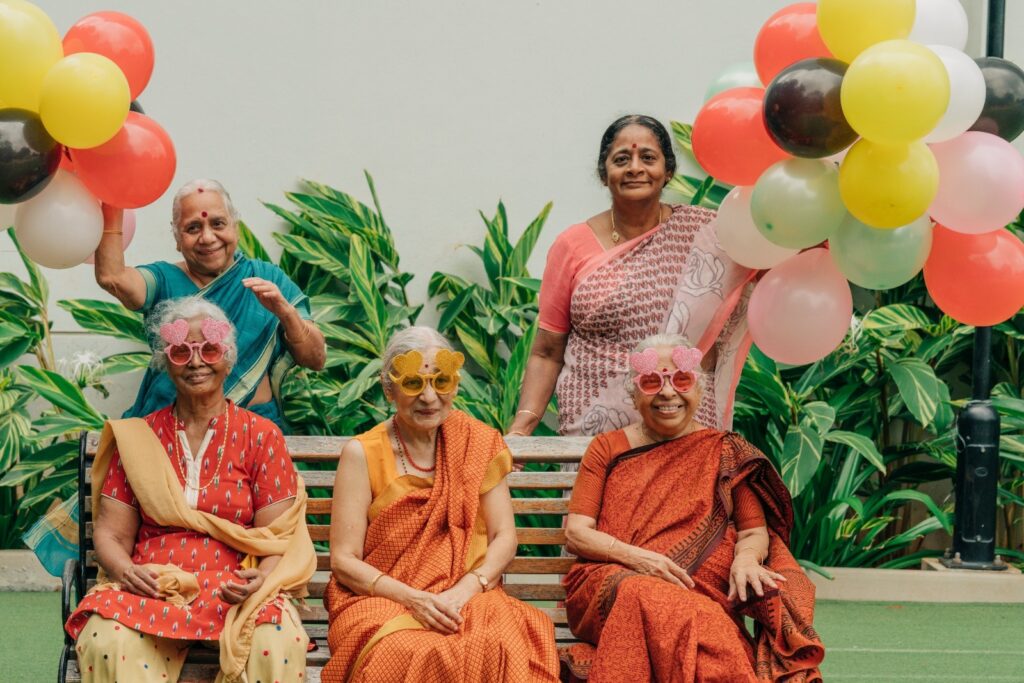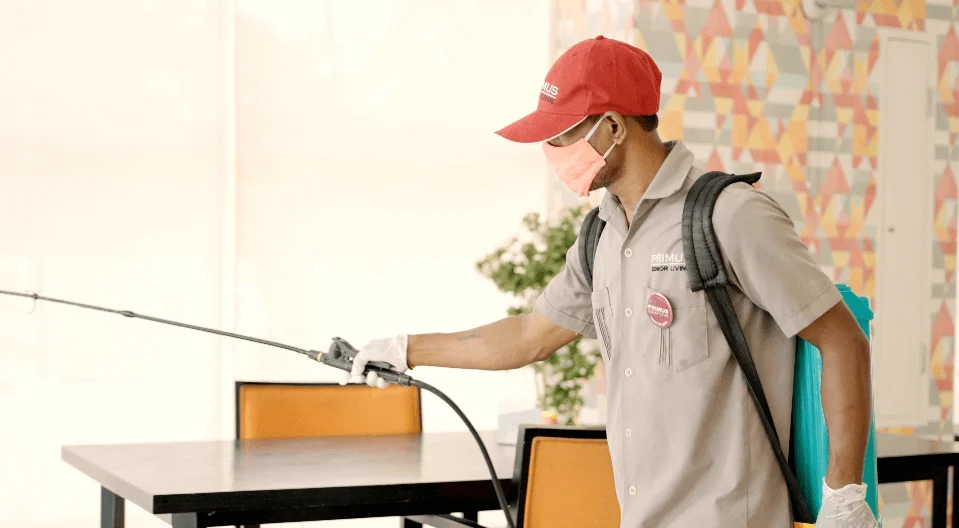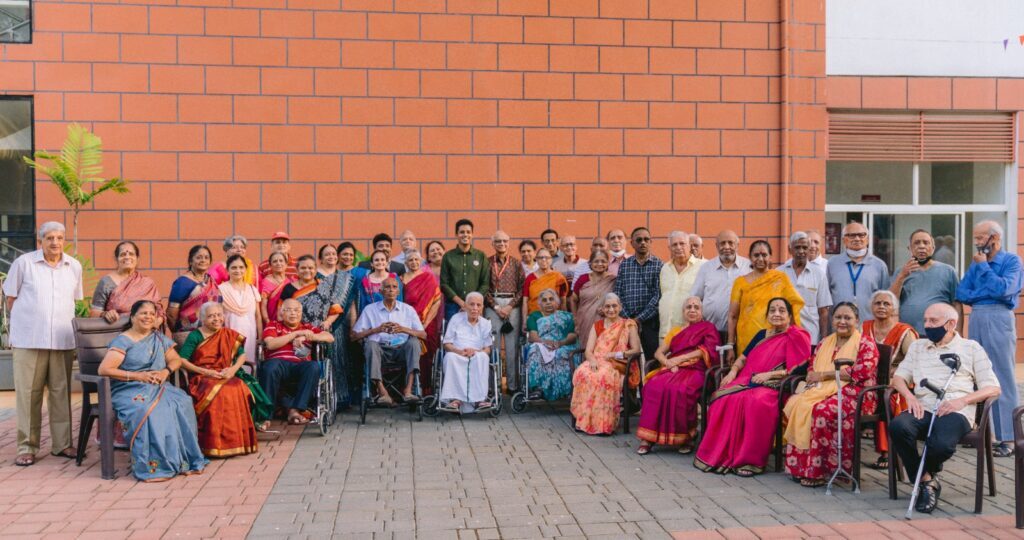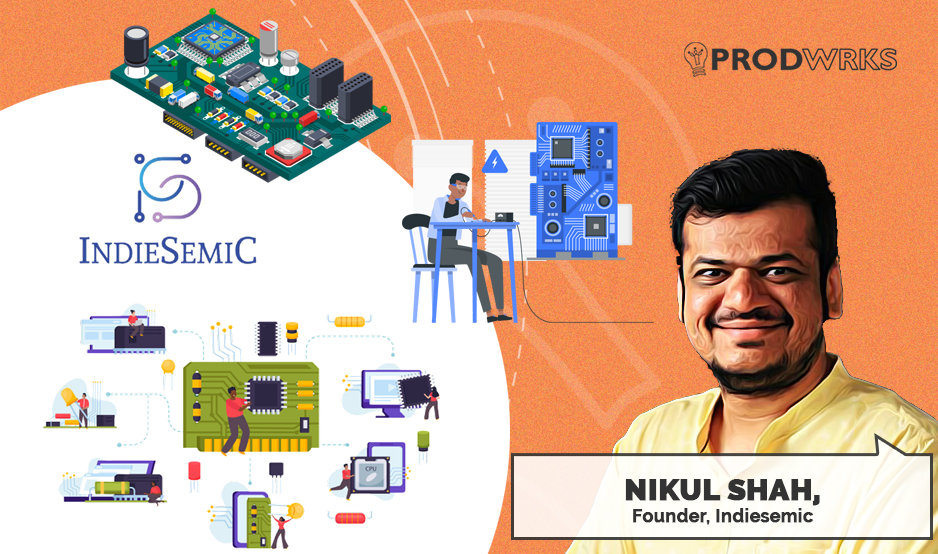
For generations in India, the phrase “old age home” has evoked discomfort – an image shaped by social stigma, whispered disapproval, and dramatic Bollywood depictions of abandonment. However, Adarsh Narahari, founder of Primus Senior Living, wants to shatter those perceptions.
Primus is a real estate firm developing senior-friendly living spaces and services – a booming market today. According to a joint report by real estate consultancy JLL and the Association of Senior Living India (ASLI), India’s senior living housing sector is expected to skyrocket over 300 percent by 2030 to $7.7 billion (Rs 64,500 crore).
“Primus is not an old-age home,” Adarsh asserts in a conversation with Team ProdWrks. With Primus, Adarsh is fundamentally reimagining what it means to age well in modern India, a country with over 140 million people aged 60 and above. Walk into any Primus residential community and you’ll find vibrant elders engaged in activities, sharing meals and laughter, and living with a sense of purpose and independence.
With 2,500+ residential units under construction and hundreds of sold-out units across Bengaluru, Chennai, and Pune, Primus is growing fast. Backed by a $20 million seed round led by General Catalyst, the company is now expanding to Hyderabad and Kolkata.
To better understand the growing opportunities in elder care and senior living, we bring you the growth story of Primus Senior Living and its founder, Adarsh Narahari. We dive deep into how he designs and builds for elders by understanding their needs and aspirations.
Adarsh’s Journey: From Core Real Estate to Senior Living Market
"She called me one day," Adarsh shares. “She said, Putappa, why don't you do something for my sisters? Why don't you do what they call a retirement community?" Intrigued, Adarsh began his research into elder care and senior living.
He flew to the US, immersing himself in the senior living landscape, staying in communities from Shell Point in Florida to the star-studded Belmont Village on Rodeo Drive to understand the nuances of the sector.
His quest even took him to Japan, a country grappling with an aging population but with cultural nuances closer to India’s. He spent 45 days living in Japanese retirement communities, meeting stakeholders, and absorbing their philosophies.
Armed with global insights but grounded in local realities, Adarsh returned to India, ready to build something new. In 2015, Primus Senior Living was incorporated. His mission wasn’t simply to provide housing; it was “to create a community of elders where we can give them a better purpose and then kind of reduce the aging process and improve health span.”

Why is the Senior Living Segment Booming Today?
Adarsh shares three major social trends that have made elder care a timely and relevant opportunity in India:
1. Rise of Nuclear Families: Urban India is moving away from the traditional joint family system. With 60% of families now nuclear, more elders were living alone or without daily support.
2. Financially Independent Younger Generation: Economic reforms and post-1991 growth enabled younger generations to become financially independent, reducing their reliance on parental support.
Adarsh notes, “Most kids are financially secure. They are not leaning on their parents for financial freedom. So that gave parents the ability to think of themselves.”
What’s Missing in India’s Senior Living Segment?
“Senior living, done right, is fundamentally not a real estate business. That was the first learning from my travel to Japan and the US, and seeing their senior living communities. The home (property) is just incidental to the business. The real layer that matters for elders is the level of service. Primus’ services are at the intersection of a hospital, a hotel, and a home,” Adarsh explains.

Services offered by Primus are primarily aimed at enhancing seniors’ health span and convenience. It includes on-site healthcare, housekeeping, nutritious meals, and a warm, culturally familiar environment that honors Indian values.
Adarsh’s definition of convenience must be viewed through the prism of community, stress-free living, and optimal nutrition. Similarly, his definition of health transcends the typical reactive model.
"How do you look at health from the lens of prevention, not from the lens of reaction?" he posits."We wait for something to go wrong. Then we go to a doctor. Typically, we are treating the symptoms. Primus aims to break this cycle.”
Primus takes care of both traditional health and psychosocial health of seniors in their community:
Traditional Healthcare: Regular blood markers, bi-annual oncology tests, annual DEXA scans (for bone density) to detect underlying conditions early, often in Stage 1. Crucially, physiotherapy plays a major role.
“Falls are one of the main reasons why people lose their health span,” Adarsh states. “So we need to prevent falls from the lens of physiotherapy as opposed to saying, okay, fine, now go get a knee replacement surgery.”
Psychosocial Health: This encompasses community health (how well-integrated someone is), technology health (using tech for connection and convenience), and mental health support.
The ultimate goal? “We improve the chance of people living longer on their feet (health span),” Adarsh asserts. “No elder wants to depend on anybody. The thing that everybody values the most is their independence and their dignity.”
Primus’ approach is inspired by principles of Blue Zone living – geographic micro-regions around the world known for their lower rates of chronic diseases and longer health span. Italy, Greece, Japan, Costa Rica, and the United States have Blue Zones. Adarsh wishes to create Blue Zones in India with Primus.
“The six pillars of Blue Zone living are physical activity, mental activity, purpose, community, and nutrition. Interaction with nature is also important. So we ask: within the boundaries of our compound, how can we provide these elements to our elders?”
Tailoring Global Concepts for Local Needs
While Primus was inspired by global models, Adarsh was quick to realize that a simple copy-paste approach wouldn’t work in India. Primus’ offerings are shaped by distinct insights gathered from ongoing user research, but rooted in the unique cultural and behavioral traits of Indian elders.
Cultural and Regional Diversity: Unlike in the West, where senior living models can be standardized, Indian seniors require region-specific, personalized services, especially in areas like food.
“India is like Europe. We have 25 countries in one country… We started making three versions of one dish versus having three different dishes on our menu.”

Relationship-Oriented Culture: Indian elders value relationships and conversation over transactional efficiency. This insight changed how frontline staff were trained, prioritizing personal connections over speed.
Health Markers Need Local Calibration: Global health data doesn’t map cleanly to Indian bodies. Primus tailored its healthcare model by accounting for locally relevant health indicators.
Ownership Over Renting as Cultural Preference: While lease models are preferred globally, Indian elders value homeownership.
Multi-Generational Living: While urban India is moving toward nuclear setups, “staying together with parents” is still a need. Primus has responded by integrating senior living into larger, multi-generational housing and development projects.
Adarsh explains. "If there are 10 towers developed in a larger residential project, Primus plugs itself into one of those. Parents and in-laws can live in one tower, while children and grandchildren can live in another.
This “together but apart” model caters to families wanting closeness while respecting individual space and lifestyles. Crucially, the extensive Primus service layer (dining, healthcare, housekeeping) is often made available to the entire multi-generational community, adding convenience for all residents.
Selling to Seniors - The Primus’ Playbook
Primus’ customers are from a specific demographic: “educated upper middle class Indian elders,” typically couples around 65, where at least one spouse is a graduate.
Adarsh finds that “the higher the education level of the elder, the quicker their adoption into what we do,” aligning with Primus’s “pull sale” strategy based on educational awareness and content rather than aggressive marketing or discounts (push sale).
Customer conversion happens through education-led engagement: seminars, long-form content, and direct communication that allows elders to take the lead.

“The decision to move is made by the elders themselves, while children play a supporting role, mainly validating the choice through research and peer input,” adds Adarsh.
The business model has two core components:
1. Home Sales: Building elder-friendly homes. These properties can be bought, rented, or occupied like any other real estate asset, with Primus making a typical real estate margin on the sale.
2. Services: A mandatory, comprehensive service package operating on a transparent “cost plus 20% open book basis” where the actual expenses of running the services offered by the community are shared with residents, and a flat 20% margin is added. This includes all services tied to healthcare, hospitality, and operations.
All Primus’ facilities are in Tier 1 cities to sustain its resource-intensive service model, which requires a concentrated customer base to justify the cost of delivering integrated healthcare, hospitality, and housing.
“Primus integrates the services of a hotel, a hospital, and a home. So I have people from these three backgrounds, and it’s a very expensive back-end operations engine. So I need to be in locations where I can multiply fast. And that is the reason we build in Tier 1 cities.”
Building the Primus Ecosystem: Product, Experience, and Evolution
Designing the physical space required meticulous attention to the unique needs of seniors. These design choices are based on years of hands-on experience and constant feedback from residents rather than theoretical standards.
Adarsh identifies three primary goals for the physical environment: “improve the chance of interaction between the elders” and “improve accessibility and reduce the chance of falling.”
Fall prevention is paramount. “Every elder thinks that they will never fall until they fall,” Adarsh states grimly. “And once there is a fall, life is never the same.” Primus incorporates numerous design features to mitigate this risk:

- Level Surfaces: No thresholds at main doors; sliding door tracks merged into the floor.
- Accessible Switches: Wider switches positioned 100mm lower than standard height.
- Smart Lighting: Sensors by the bedside to automatically activate lights at night.
- Emergency Systems: Panic buttons strategically placed in bathrooms and common areas.
- Safe Flooring: Anti-skid tiles and appropriate materials.
- Ergonomic Kitchens: Designed for accessibility, allowing seated cooking with pull-down shelves.
- Thoughtful Furnishing: Chairs without wheels, fabric armrests instead of hardwood, curved wall edges to avoid sharp impacts.
- Secure Doors: Double-hinged doors (opening inwards and outwards) for easier access in emergencies, no tower bolts, and airline-style bathroom locks that indicate occupancy but allow external access via master key.
Every design feature here represents an opportunity for founders to design products that are tailored to elders.
"These are all standards that we have designed now over a period of time," Adarsh reveals. "We have our own Primus standards... because we have taken care of elders for so many years and we have taken active feedback about what they like and what they don't like."
Designing Feedback Loops in Senior Living Spaces
Adarsh shares that feedback collection is robust and continuous at Primus and plays a vital role in designing elder-friendly living spaces.
“The beauty about my customer is whether you want it or not, feedback comes on a daily basis,” he laughs. Interactions thrice a day during daily meals in the restaurant are a prime source.
Formal mechanisms include feedback registers and design workshops held every six months, where new product ideas are presented to residents. Increasingly, Primus is implementing a digital ecosystem where every service interaction – from housekeeping to meal service to maintenance – is rated immediately.
This feedback is compiled and reviewed in quarterly meetings, allowing the team to iterate and improve services continuously. This feedback loop has driven significant evolution.
One major pivot involved the ownership model. Initially, Primus offered only a lease model, common globally, assuming elders wouldn’t want to block capital in real estate.
"It was a mistake," Adarsh admits. "We realized that elders have a deep desire to own and bequeath a home to their family. So Primus pivoted to a sale-based model.”
Defining Success
In the eldercare space, customer satisfaction and trust are critical indicators of success. Primus saw a clear product-market fit when elders voluntarily reported higher happiness and well-being within their communities.
“We have people coming from giant bungalows worth a lot of money with lots of servants… and they have come to this relatively smaller house that we are offering. But we offer this community, and they are happier here than where they were before.”
“There is no strategy. I wish I could give you some fancy words for it. There isn’t. If people are happy, they will recommend you to more people. It’s as simple as that.”
Scaling Trust: From Primus Communities to the Marzi Universe
Primus has established a successful, replicable physical model validated by strong customer satisfaction. However, scaling a high-touch, service-intensive physical model presents challenges. Their vision for broader reach lies in a new venture: Marzi.
Launched just weeks before this interview, Marzi is an Elder Tech platform designed to serve seniors beyond the walls of Primus communities. The name means “live life on your own terms.” “The objective of Marzi is to give various solutions to elders who are not part of the Primus ecosystem,” Adarsh explains.
Marzi operates on a phygital (physical + digital) model, aiming to become a “one-stop shop for all elders everywhere.” Initial offerings include curated travel for seniors, “Art of Aging” workshops, home improvement services (making existing homes elder-friendly), preventive healthcare plans, concierge services, AI companionship tools, and more.
From a personal mission sparked by his grandmother’s concern for her sisters, Adarsh Narahari has built Primus into a leading force challenging conventions around aging in India. Today, Primus and Marzi offer a compelling vision for a future where aging in India is not about decline, but about continued engagement, joy, and living life fully, independently, and with dignity. Adarsh and his team are not just building communities; they are building a better way to grow old.



